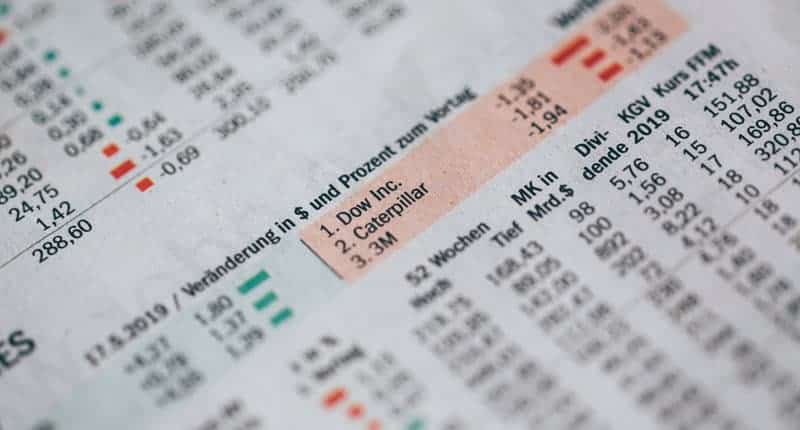
With the current situation and the economy slowly going backwards, now is the perfect time to get started building your investment portfolio. One way to think of the market at the moment, is everything being on sale as most of the stocks are losing value. You’ll be able to snap up some great shares at incredible prices and start to build your portfolio into a long term growth plan.
Disclaimer: I am not a finance professional and this article is supposed to provide you inspiration. Know there are always risks to investing, so please do your research before proceeding with any investment.
Step 1. Defining Your Investment Goals
Before starting an Investment Portfolio, it’s good to know what you are trying to build. This will avoid bad investments in the future and help align with the right companies.
Getting Started with an Investment Portfolio
For beginners, it’s always good to keep things as simple as possible, reduce the amount of risk and keep the fees low.
- Keep it simple – Build a basic investment portfolio focusing on funds that contain bonds and shares. Stay away from individual companies, as well as things like cryptocurrencies.
- Stay diversified – This will reduce the risk of your investments. To do this we will invest globally and across different asset classes.
- Reduce fees – Lowering the costs of the investments will increase profit margins and maximise returns.
Long Term Investments (Conservative Investors)
If you are someone looking to create a long term investment strategy then you’ll probably sit underneath the conservative investor bracket. This means you’ll most likely invest in a large percentage of your portfolio in Fixed Income Securities and a small portion in Equities.
This strategy will help protect the value of your portfolio, yield current income from the bonds and could also provide long-term capital growth in the equities.
Short Term Investments (Aggressive Investors)
Unlike the conservative investor, building an aggressive investment portfolio will face much more risk and volatility. With that, comes the possibility of creating greater returns than a conservative portfolio. This usually means you’ll invest the majority of your money in equities and a smaller portion in fixed income securities.
If you are considering being an aggressive investor, you must be willing to bear the loss of your investment.

Step 2. Choosing an Investment Platform
When it comes to choosing an investment platform, it all depends on how you react when seeing certain things. Ensuring your initial experience is pleasant when it comes to investment platforms is crucial, as you’ll wish to learn more and continue. This is why making sure you don’t feel overwhelmed is vital for long term investing.
Our recommendation to start with is Sharesies
Sharesies is a New Zealand based company that is simple, easy to use and minimalist. They reduce all the overwhelm when getting started, showing you only what you search for, or the minimum for you to move forward. It’s extremely easy to use, and it has helped hundreds of thousands of Kiwi’s get started with investing.
For a limited time, get $5 free credits to invest when signing up with Sharesies here
Other Investment Platforms Include
Simplicity – A Fund Manager who will manage your funds for you and invest in assets including bonds and shares.
InvestNow – A Fund Platform who provide a list of funds that are available, so you can invest in the ones you think are good.
Step 3. Achieving the Portfolio
Once you have decided on the right type of portfolio you want to build, now you need to divide your capital investment between the appropriate asset classes.
Mutual Funds
In layman’s terms, a professional investor takes all the money from all the investors backing the fund, and invest it to try and achieve the goals set in the funds prospectus.
Each fund has its own indicators of risk, records of growth and value as well as dividend percentage returns and dividend payout dates.
Exchange-Traded Funds (ETFS)
An Exchange-Traded Fund is similar to that of a Mutual Fund. The main difference though is that an ETF is listed on exchanges like normal stocks and aren’t actively managed like Mutual Funds.
This basically means that the share pricing will fluctuate throughout the day as it’s bought and sold on the exchanges. The ETFs are also passively managed, meaning you can save on costs compared to mutual funds which are actively managed.
In layman’s terms, an Exchange-Traded Fund is similar to a mutual fund, except it is managed passively and listed on exchanges so the value can fluctuate daily.
Companies
Investing in companies vs funds is like putting your eggs in one basket, instead of having your fingers in multiple baskets. It is usually not a good idea to invest into companies without prior research deeply into their companies history, governing members, progression and valuation.
That being said, if you have some insight on the near future or releases for the company and you’re certain the share price will increase, it could be a profitable investment.
As I mentioned earlier, do your homework before choosing to invest in funds or companies. There is always risk, so do your homework before deciding. This article is for inspiration, not professional guidance.

Step 4. Assessing Your Porftolio Weightings
Once you have purchased the assets you are happy with, it’s time to go back through your asset allocations to see if your investment portfolio suits the type of investment plan you originally set out to create.
Sometimes you will realise that you are unbalanced and holding more equities or securities than your asset allocation suggests you have. This means you will have to rebalance your portfolio and you may have to sell off some of your assets and purchase more of others.
This can sometimes lead into tax implications depending on the growth of your stock and how long you’ve held it for. The most common being Capital Gains taxes. One way to get around this is to keep the assets you currently hold, then when you go to invest more money into your investment portfolio, only invest in the assets that require more volume to balance out the portfolio. This should eventually level it back out.
Building an Investment Portfolio: Recap
Building an investment portfolio can be a great way to increase your wealth, if played right. Remember to diversify your portfolio within asset classes, and even diversify within each class. Never put all your eggs in one basket and do your research in multiple industries.
Understand your goals before building your investment portfolio, that way you will know what percentage of asset classes you need to buy. If possible, stay away from Companies and stick to ETF’s and Mutual Funds as you can enjoy the growth that money managers can generate.
Always do your research. The more you know about the industry and the more you learn about what the markets are doing, the better the choice of investment for future assets you will have.
If you are new building an investment portfolio, make sure you check out our recommended investment platform Sharesies. They make it that extra little bit easier for new investors to get started and see how investing works.
On a side note, if investing sounds like it’s in the ‘too hard basket’ then check out the best Savings Accounts in New Zealand to help your money, make you money.
